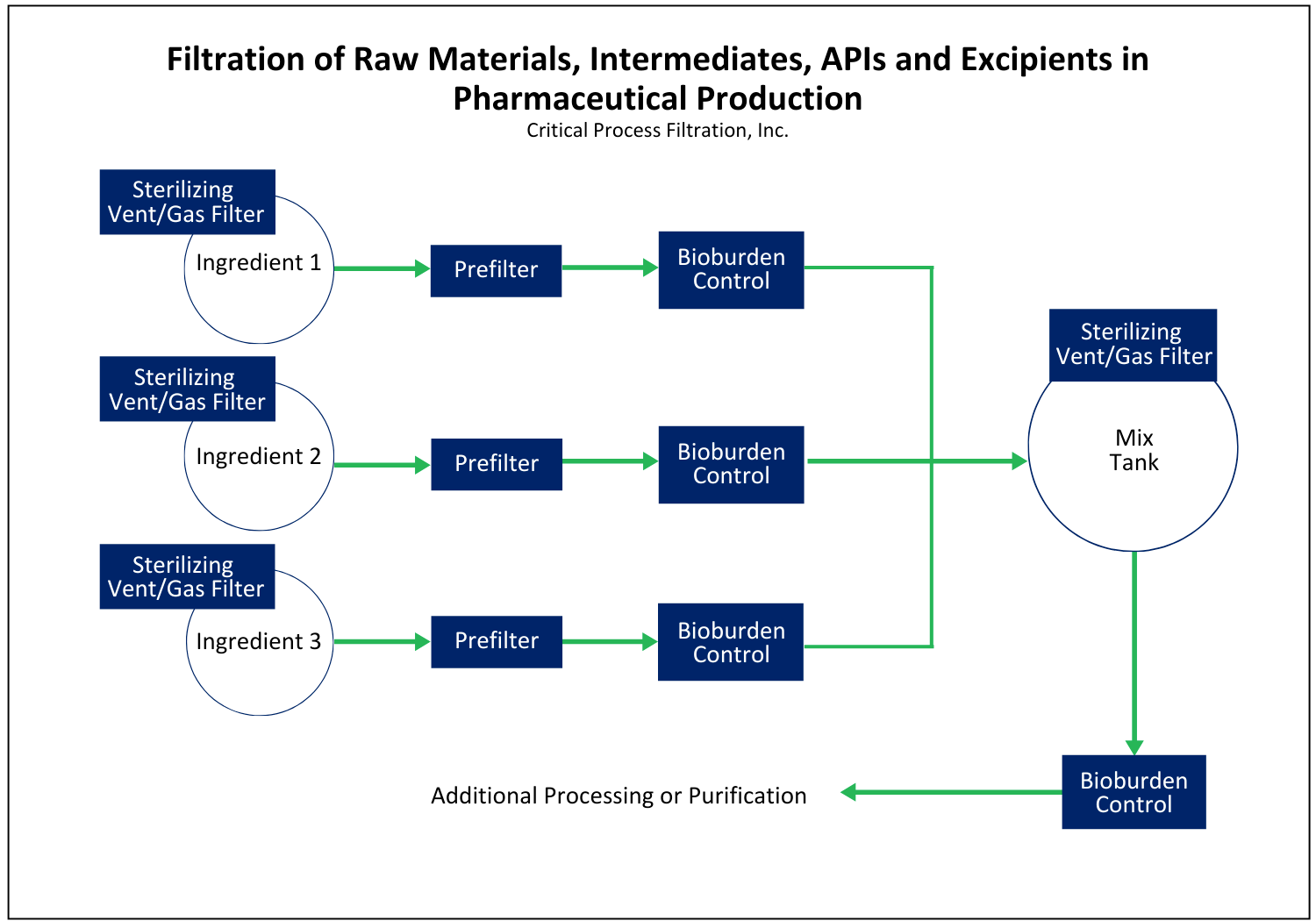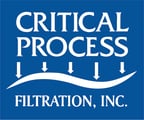Although small molecule and biologic drugs are very different in nature, size and production, the filtration strategies for ensuring ultrapure APIs and excipients are very similar.
Ingredients used in the production of these pharmaceuticals are often from sources outside the direct control of plant operators. Consequentially, system operators generally treat all ingredients as if they contain at least some form of contamination that might harm production processes and/or product quality. The quality of the chemical compounds and adventitious organic source materials will determine if filtration is required for raw ingredients, intermediates, APIs, or excipients.
The principal issue with ingredients from outside sources is the unknown nature of the possible contamination. Even if the source of the ingredient has a reputation for quality and consistency, operators should guard against all possible scenarios. That means the possibility of unwanted particles, bacteria, or other microorganisms. Cartridge filters with proper filtration media configurations are a cost-effective method of controlling and removing these unwanted contaminants.

Figure 1: Filtration of Raw Materials, Intermediates, APIs, and Excipients in Pharmaceutical Production
Filtration Goals
Assuring the purity of ingredients as they enter the production process increases efficiency and improves product quality. The schematic in Figure 1 highlights the filters used for ingredient filtration before they enter the production process. These filters are designed to remove particles and microorganisms and also protect the ingredients from environmental contaminants while they are stored in tanks.
There are many possible filter configurations, and the actual filter systems used will be designed to remove the contaminants that are known to occur in specific ingredients. The filters shown perform the basic functions needed to remove contaminants from any ingredients. The prefilter(s) remove particulates that could prematurely foul downstream filters. Bioburden control filters reduce or eliminate bacteria. Tank vent filters protect tank contents from the surrounding environment.
Although only one of each filter type is shown in each ingredient line, there may be issues unique to your process that may require additional filters.
Particle Removal Filters
Prefilters are employed to remove unwanted particles that may be entrained in the ingredient feed streams. The figure shows prefilters at the point of entry for each ingredient. These prefilters are designed to capture larger particles that could prematurely foul bioburden reduction and sterilizing filters. They are most often used to remove inorganic particles such as undissolved powders and similar contaminants. Some large organisms, such as molds or yeasts, can also be captured by these filters.
Depending on the particle load in the ingredient, additional prefilters may be required in the series to adequately protect the bioburden control filters. This could be accomplished by installing separate filters, or by layering prefilter material within the same cartridge.
Depth filters are commonly employed for this step. Pleated filtration products, with large filtration media surface areas, can remove several times more particle contaminants than standard melt-blown or nano-spun depth filters.
Bioburden Control Filters
Filters that are designed to remove most, but not necessarily all bacteria are designated as bioburden reduction or bioburden control filters. The filter micron rating may be 0.22 μm, 0.45 μm, or even 0.65 μm depending on the target organisms to be removed. These are generally used to relieve some of the burdens of final, sterilizing filters.
Depending on criticality, operators may elect to employ sterilizing filters in the locations marked as bioburden control in the schematic. To decide which, several factors must be considered:
- Likelihood of bacterial contamination in the ingredient
- Level of contamination that might be encountered
- Adequacy of cleaning/sterilizing procedures for the delivery and tank system
- The burden placed on downstream sterilizing filters if a bioburden reduction filter is not employed
- How conducive is the formulation to bacterial growth?
If bacteria can easily propagate in the product, then a sterilizing filter is the best choice. If not, a less expensive bioburden reduction filter could be employed.
Sterilizing Filters
Sterilizing grade filters are rated to remove particles and bacteria that are 0.22 or 0.10 microns in size. If required, these may be used in the locations marked as bioburden control. A sterilizing filter is often employed in the line from the mix tank to further processing.
Critical Process sterilizing grade filters have been validated for > 7-log bacteria removal following ASTM-838-15 protocols. CPF will provide a validation guide for the filter(s) chosen documenting test results for bacteria retention, and information regarding filter construction, biosafety, and performance. The final choice of pore size often requires validation testing in the actual fluid to be processed.
Tank Vent and Gas Filters
Tank vent filters are used to protect the media or buffer solutions stored in tanks from bacterial and particulate contamination. As a tank is filled, the air inside must be allowed to escape. However, as the tank is emptied, air (or a process gas such as nitrogen) must be allowed to enter the tank to replace the lost liquid volume. The filter removes particle and bacterial content from the air or gas to assure the quality of the solution.
The vent filter membrane must remain dry so that air or gas can pass freely through the filter. To assure that dryness, filters are made using hydrophobic membranes, usually PTFE.
Choosing the Right Filters
The proper sequence of Prefilters and Bioburden Control filters is key to optimizing process efficiency and minimizing filtration costs. The CPF Applications Team can help identify which filters are right for you and can provide testing support either in our Applications Lab or on-site at your facility.
The filter(s) selected must be compatible with the fluid being filtered and process disinfection/sterilizing methods. The filter(s) must be capable of removing target organisms without affecting the composition or activity of the fluid being filtered.
Critical Process Filtration provides multiple filter options.
- Membrane and Media Materials - PES, Nylon 6,6, PVDF, PTFE, Polypropylene, Fiberglass
- Filter Configurations - Cartridge, Capsule, Laboratory Scale
- Filter Function - Sterilizing, Bioburden Reduction, Prefilters, and more
Filter Options for Particle Removal, Bacteria Removal, Vent & Gas Filtration
Prefilter Options
- PPD (polypropylene pleated depth filter)
- PGD (fiberglass pleated depth filter)
- BCWPS (high capacity PES)
- GDMB, NSPD (polypropylene depth filter)
Bioburden Reduction Options (Liquids)
- BPS (PES membrane; High capacity PES prefilter layer optional)
- BNM (Nylon 6,6 membrane)
- BPVWL (PVDF membrane)
Bioburden Reduction Options (Gas)
- BTM (PTFE membrane)
- BPVWB (Hydrophobic PVDF membrane)
Sterilizing Options (Liquids)
- PPS (Dual layer PES membrane)
- DPPS (PES membrane with bioburden prefilter)
- SPS (Single layer PES membrane)
- HPPS (PES membrane with high-capacity PES prefilter)
- PNM (Nylon 6,6 membrane)
Sterilizing Options (Gas)
- PTM / PTR (PTFE membrane)
